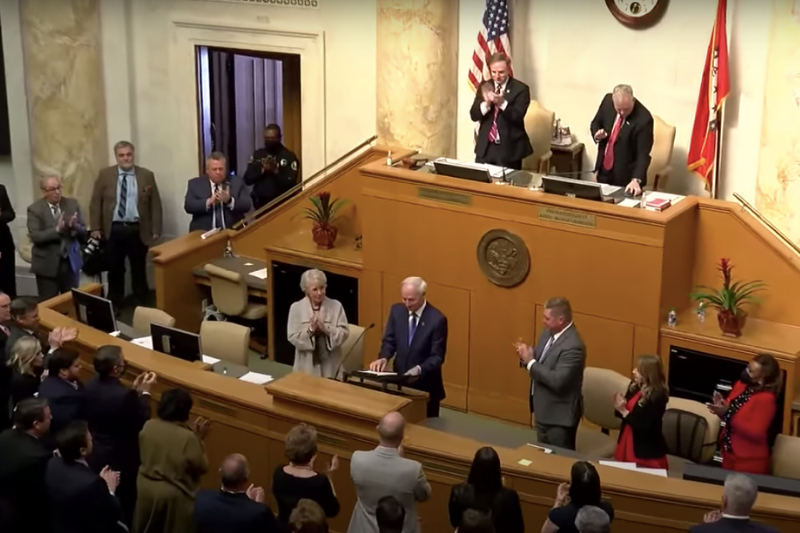Lawmakers begin considering Asa Hutchinson’s proposed $6 billion budget this week.

Lawmakers returned to Little Rock today for the start of the 2022 fiscal session. The first item on their agenda was listening to Gov. Asa Hutchinson’s eighth and final State of the State address. Hutchinson is term-limited and is not seeking re-election this year.
“The opportunity to serve and lead the state that I love has been the highest privilege of my public career,” Hutchinson said.
During this fiscal session, legislators will consider the governor’s proposed $6 billion budget, which Hutchinson said includes increased funding for education, health care and public safety.
The governor today announced support for a $5,000 one-time payment to every county and city certified law enforcement officer. This initiative is expected to cost approximately $45 million in total and funding will come from the state’s surplus. The governor’s finance team estimates Arkansas will have a $500 million surplus at the end of the fiscal year on June 30.
In 2021, lawmakers passed Act 786 to create the Public Safety Equipment Grant Program. The program was one of 27 recommendations made by the Task Force to Advance the State of Law Enforcement in Arkansas that the governor convened after the murder of George Floyd. The goal of the task force was to increase trust between police and communities, and to improve the training, equipment and pay for law enforcement officers, Hutchinson said.
The grant program has received about $5 million in requests for equipment like body cameras and bulletproof vests from cities and counties. The program doesn’t have sufficient funds, so Hutchinson recommended using $10 million in one-time funding from the state’s surplus to fund the $5 million in applications and another $5 million in new requests.
“Currently, our law enforcement is underfunded, underpaid and underappreciated,” Hutchinson said. “The actions of this General Assembly to fund more, pay more and to appreciate more will send the unmistakable message that in Arkansas, we support and value our law enforcement partners.”
The governor’s proposed budget includes an increase in pay for state troopers, who Hutchinson said are deserving of a “more competitive salary.” The governor also challenged counties and cities to do more for their law enforcement officers because funding should “be a priority at every level.”
“While some across the country advocate for reducing police funding, we are doing the opposite,” he said. “We are increasing support and affirming that the first duty of government is public safety.”
Because of a “record backup of state prisoners” in county jails, the governor recommended a one-time investment from the state’s surplus to fund a new 498 inmate prison facility. The facility would be located in Calico Rock and is expected to cost between $60 and $100 million. The governor first announced support for the project last Thursday, after which DecARcerate, Inc., and the Arkansas Justice Reform Coalition issued a joint statement in opposition to the plan.
“Arkansas’ punitive approach ignores data-backed solutions that have created better community safety and well-being in other areas of the country,” officials said in their statement. “Investments in these areas will be more cost-effective than continually building more jail and prison beds.”
Both groups organized a rally at the Arkansas State Capitol this morning ahead of the governor’s address. Protestors interrupted the governor’s speech on the floor of the Arkansas House with chants of “no new cages.” With an incarceration rate of 942 per 100,000 people, Arkansas has the fifth highest incarceration rate in the country, according to a report from the Prison Policy Initiative.
The United States incarcerates more people than any other country and accounts for 25 percent of the world’s incarcerated population, according to the Vera Institute of Justice. People of color make up 60 percent of the U.S. prison population.
Hutchinson argued the need for a new facility is not a change in incarceration policy, but rather a response to the state’s growing population. The governor’s State of the State address can be watched in its entirety on YouTube.






